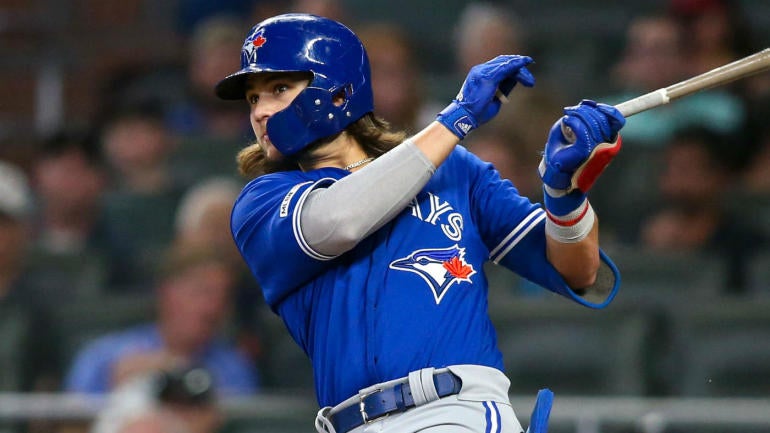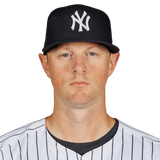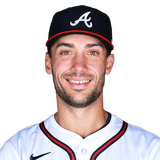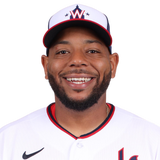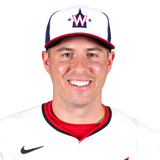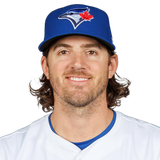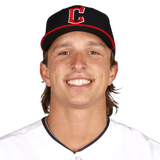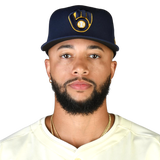"Bust" is a tricky word in Fantasy sports. If you take someone in the first round and he finishes as the 55th-best player, is he a bust? Does a player have to be so bad that you basically can't use him? Can a player be a bust if you simply think he's being overvalued -- if similar players are going several rounds later?
Honestly, there doesn't have to be one definition. At least, not in my eyes. It could be a player I think is just going to flop entirely, but it could also just be a player I'm not willing to draft at the going cost. When I put together a list of busts, I'm not looking to throw out hot takes, saying that the high-end players you want to draft are actually terrible. For me, it's more like a list of players I'm staying away from.
In some of these cases it's because I just think the player might be terrible, sure -- Patrick Corbin, Kevin Gausman and Cavan Biggio fall into this category. In others, I have concerns about their roles and whether they'll be worth their cost as a result -- James Karinchak and Dominic Smith qualified here. In some cases, it's because I think you can get similar production later in your drafts -- DJ LeMahieu and Matt Olson come to mind.
Chris Towers' Sleepers 3.0 | Breakouts 3.0
In every case, however, I'm simply not looking to draft any of these players at their current price. Each of them could be useful, even very good, but I don't think any of them are the best option to help you win your league where they tend to be drafted.
We talk Sleepers, Breakouts and Busts on the Fantasy Baseball Today podcast embedded below, and make sure you subscribe at Apple, Spotify or anywhere else you get your podcasts for more of our comprehensive draft prep coverage:
It's hard to come up with an argument against Bichette, who has played at a level very much worth this kind of cost since making it to the majors. He doesn't have any obvious flaws in his game -- maybe his plate discipline could be better -- and if he just keeps doing what he's done in the majors to date, he's going to be a very good Fantasy player. The problem is his 25.4 ADP, meaning you have to invest either a second or early-third round pick for him, passing up on the likes of Adalberto Mondesi, Xander Bogaerts, Corey Seager or Alex Bregman to take him. He can be worth that price, but you're drafting him pretty close to his ceiling at this cost. And, while there aren't any obvious holes in his game, there also aren't necessarily any incredible carrying tools. Bichette is a good athlete, but not an elite one; he hits the ball pretty hard, but he's not a standout there; he's about average in terms of strikeout rate. Sometimes, those kind of players can be greater than the sum of their parts, but if Bichette does falter in some way -- his average drops to .275 (he has a career .278 xBA), or he only steals five bases or hits 22 homers -- he doesn't necessarily have one standout skill he can fall back on. Bichette could be at the beginning of a decade of Fantasy dominance, but you're paying full price based on a 75-game sample size.
The nice thing about LeMahieu is he's got a really high floor thanks to his elite contact skills and lineup. But I'm wary of paying for his 25.0 ADP coming off a career year in a shortened season. Especially with concerns about a deadened ball being introduced into play in the regular season, something MLB is reportedly preparing to do after the spike in homers in recent years. LeMahieu's home park fits well with his approach, as he excels at going out of the way and sneaking balls over the short right-field wall in Yankee Stadium, but he might be one of the players most impacted by a ball that doesn't travel as far. LeMahieu actually hits the ball pretty hard, but because he has such a line drive/groundball approach where he sprays the ball all over the field, he doesn't hit many no-doubt homers. In fact, in 2020, he had the third-lowest average home run distance in the league, at 361 feet; in 2019, he had the seventh-lowest at 386 feet. According to BaseballSavant.com, he has outperformed his expected home run total by 12 over the past two seasons, one-third of his total. He's still a good bet to hit for a .300 average, but if LeMahieu hits .305 with 15 homers, is he really that much different than Jeff McNeil, going nearly 80 picks later?
Dominate your Fantasy Baseball draft with our free Draft Kit, which gives you must-have sleepers, breakouts, busts and rankings. Plus see the top players at each position, complete with winning projections. Get the Draft Kit in your inbox completely free here.
Biggio's game is fine-tuned to make the absolute most out of a fairly limited skill set, and he deserves props for that. If every player maximized their skills the way Biggio does, this game would be a lot more predictable. However, it also means he might have a fairly slim margin for error compared to a lot of other players being drafted inside of the top 100. Like LeMahieu, Biggio rarely hits no-doubters, and the fact that he's never had a batted ball over 105 mph in the majors is a good indication that he isn't likely to unlock more raw power -- he had the lowest max exit velo of any qualified hitter in 2020. He only projects to be something like an 18-22 homer guy, so he could drop to 15 pretty easily, and his approach is never likely to generate good batting averages, so he'll be a minus there, too. Oh, and while his 20 steals in 159 games look like a pretty good total, he hasn't been caught stealing yet, so that number is likely inflated, too. If he's a 75-80% success rate guy in steals and his power regresses, is Biggio a .230 hitter with 15 homers and 15 steals? Can't you get that from Tommy Edman or Nick Senzel a lot later? Or Byron Buxton, one of my breakout picks?
I think Olson is an excellent power hitter, and it's possible that a deadened ball may impact the value of a player like him less than the fringier options mentioned above. That could make him relatively more valuable. However, the problem is, Olson has one of the easiest skill sets in Fantasy to find in 2021 -- low batting average, lots of homers, decent RBI totals. Olson is likely to be better than the likes of Miguel Sano, Joey Gallo, Franmil Reyes or Jorge Soler, but he also goes 50 to 100 picks ahead of those four. Is he likely to be that much better than those four? Because he's a lefty who plays in a bad hitter's park, the odds are more stacked against him than for most of his peers. Don't reach for this skill set.
There's an interesting philosophical question to be asked about Smith this season: Does a small-sample size have more predictive value if it is spread over two separate seasons? Smith broke out in 2019, posting an .881 OPS in 197 plate appearances and then backed it up with a .993 OPS in 199 games in 2020. That he carried it over from one season to the next is a good sign, but does that trump the fact that we're still dealing with fewer than 400 plate appearances? My assumption is Smith's breakout is for real, but I have enough skepticism to be scared off, especially when he's got some pretty serious playing time concerns -- with no DH, he pretty much has to play left field barring an injury to Pete Alonso. And he may not be able to play left field. If he hits well but not incredibly well, he might be destined for a part time role.
I'm not saying you should be scared off Plesac because he's had a bad 18 innings in spring training. It's just 81 batters faced, and pitchers are often just working on stuff in the spring, especially guys who have a rotation spot locked up. However, I do bring it up to highlight just how small the sample size of success Plesac's current cost is built on. He made eight starts last season against five teams, facing 206 batters total; this spring, he's faced 81 batters, so almost exactly 40% as many. Neither sample is big enough to make any definitive judgments, which is kind of the point: He's being overvalued based on basically one-quarter of a season. Could Plesac sustain the gains he made a year ago and justify his top-80 price? Certainly, there were real changes. But he also outperformed his peripherals quite a bit, and had an ugly 4.94 FIP in 2019 in more than twice as many innings. I'm inherently skeptical of small-sample breakouts, and Plesac is arguably the most obvious case to fade.
It's possible Corbin can be effective pitching in the high 80s and maxing out at 91-92 mph like he is this spring, but it's really hard to trust it after how bad he was in 2020. My concern when the Nationals signed him was that Corbin wouldn't age well because he didn't have much to fall back on if his skills diminished -- he had already become such a slider-heavy pitcher, and with a limited repertoire beyond that, I'm just not sure he has many adjustments he can successfully make. He's working a changeup in during the spring to try to counter that, but given that it's never been a particularly effective pitch for him, I'm pretty skeptical. Corbin would have to fall outside of the top 125 for me to even consider him, and I don't think I've drafted him at all this spring.
Pitching is usually pretty complicated, but in Gausman's case, it really isn't: When he has his splitter working, he's pretty good; when he doesn't, he's pretty bad. Historically, Gausman has worked the pitch in slowly, throwing it rarely in spring training in order to avoid blisters, and then introducing it in his last few starts and increasing his usage as the season goes on -- and it's no coincidence that the months where he's had the lowest ERA for his career are, in this order, July, August and September. Gausman has thrown the splitter more than ever over the last two seasons, and 2020 was his best ever. So, it's not great news that he's back to limiting his splitter usage this spring, as he told media in recent days. Eventually, he'll get it to where we want it to be and probably be a pretty good pitcher, but you need to prepare for a slow start. And, given Gausman's mediocre overall track record, it might be tough to justify hanging on to him if that happens. It's hard to draft someone in the top 140 knowing you may not be able to use him early in the season.
I think Karinchak is a very good reliever -- maybe the best strikeout artist in the game today. I have no questions about whether he could be a very good closer, even with some homer and walk issues. The problem is, he currently costs a top-100 pick, and it's not clear he's the favorite to be Cleveland's closer. In fact, I would probably bet against it at this point -- Nick Wittgren looks like the favorite from reading the tea leaves in Cleveland camp, and Karinchak may not be ahead of Emmanuel Clase, either. Karinchak should be a very valuable Fantasy piece even if he doesn't close, but his current price is a reach if he isn't the closer.
Why draft Karinchak, for example, when you could wait 60 picks and take Williams instead? It's a fair question, because WIlliams was every bit as good as Karinchak last season, with the same number of strikeouts and a 0.33 ERA to Karinchak's 2.67 mark. The problem with Williams' price is, he's definitely not the closer, and there's some real risk in his profile. He dealt with shoulder soreness during last season's playoffs, and the Brewers have been very careful with him in spring, holding him out of game action until last week. Plus, Williams' 2020 breakout sort of came out of nowhere: He pitched very well after being moved to reliever in 2019, but still had just a 12.9 K/9 in the minors. His changeup (screwball?) is one of the best weapons in the game, but we're pushing Williams' price up an awful lot for a middle reliever based on 27 innings. Given his health concerns, it's probably best not to chase this one, especially since relievers are inherently some of the most volatile and unpredictable players in the game. Buy the likes of Alex Reyes or Trevor May for cheap if you want that kind of pitcher.
So which Fantasy baseball sleepers should you snatch in your draft? And which undervalued first baseman can help you win a championship? Visit SportsLine now to get Fantasy baseball rankings for every single position, all from the model that called Will Smith's huge breakout last season, and find out.
